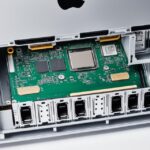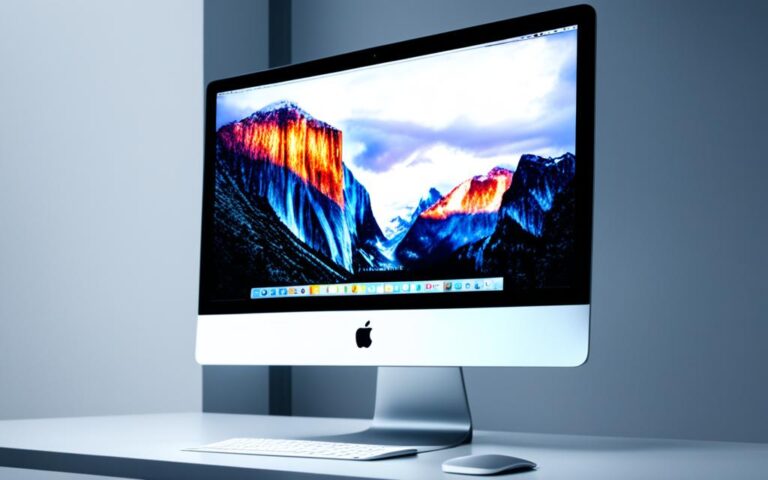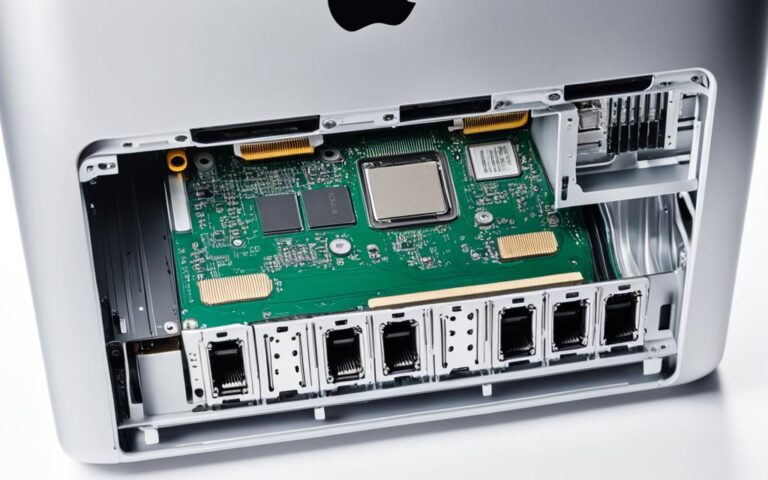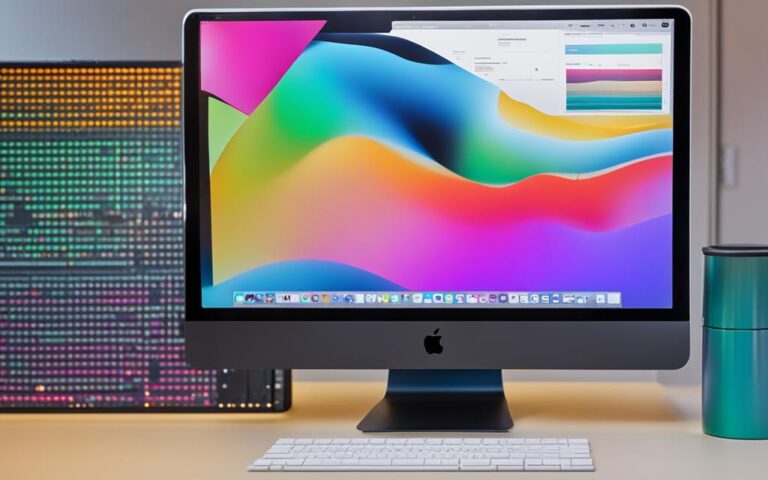The Impact of macOS Updates on iMac Performance
macOS updates have a significant impact on the performance of iMacs, both in terms of speed and security. When Apple releases new updates, users eagerly install them to benefit from the latest features and enhancements. However, it is crucial to understand that these updates can also bring about certain challenges that affect iMac performance.
One common issue reported by users is rapid battery drain after installing macOS updates. While battery age can be a contributing factor, many users believe that the updates themselves are causing this accelerated drain. It is essential to investigate the impact of the update on battery health and usage to assess if it is indeed the root cause.
Performance issues are another concern that users may encounter after updating their macOS. Slower performance and lagging applications can be frustrating to deal with. However, users facing these performance issues have the option to downgrade to a previous version of macOS. This allows them to revert to a more stable operating system while troubleshooting the root causes of the performance issues.
Battery health and age should also be considered when examining iMac performance after macOS updates. Apple batteries are rated for a certain number of full battery cycles and may degrade over time, leading to decreased performance. Checking the battery health and cycle count can help determine if a battery replacement is necessary.
Some users believe that Apple’s forced obsolescence policy plays a role in iMac performance after macOS updates. They argue that Apple intentionally makes older devices “unsupported” to drive hardware replacement. While this claim may hold some truth, it is essential to consider other factors such as software requirements and hardware limitations that may necessitate an upgrade.
Despite these challenges, macOS updates also bring important bug fixes and security updates. These updates are vital for maintaining the stability and security of iMacs, addressing vulnerabilities, and enhancing the overall user experience. It is crucial to regularly update the macOS to benefit from these improvements.
Battery longevity is a key aspect of the iMac user experience. While macOS updates can impact battery performance in the short term, they also introduce features and algorithms aimed at preserving battery health and longevity. It is recommended to follow Apple’s battery management features to optimize battery life and ensure a positive user experience.
In conclusion, macOS updates have a significant impact on iMac performance. While they bring bug fixes, security updates, and new features, they can also introduce challenges such as rapid battery drain and performance issues. It is important to consider battery health, age, and other factors when troubleshooting these issues. Regular updates and maintenance are key to optimizing the user experience on iMacs.
Rapid Battery Drain After macOS Updates
Some users have experienced rapid battery drain on their iMacs after installing macOS updates. This can be frustrating, especially for those who used to charge their devices less frequently. While battery age can play a role in this issue, many users believe that the update itself is causing the accelerated battery drain. It is recommended to check the battery health and usage to determine if the update is indeed the cause.
| Battery Health | Recommendations |
|---|---|
| Check battery health and usage | If the battery health is degraded or the usage is unusually high after the macOS update, it indicates that the update may be the cause of rapid battery drain. Consider monitoring the battery performance over a period of time to establish a clear pattern. |
| Run battery diagnostics | Many iMacs have built-in diagnostics tools that can help in identifying battery issues. Running these diagnostics can provide insights into the overall health and performance of the battery. |
| Reset SMC (System Management Controller) | Resetting the SMC can often resolve battery-related issues. This can be done by following the instructions specific to your iMac model and macOS version. |
If the rapid battery drain issue persists after considering the above steps, it is recommended to contact Apple support or visit an authorized service provider for further assistance. They can provide additional troubleshooting steps and determine if a hardware replacement or repair is necessary.
“I noticed a significant decrease in battery life after updating my macOS. It was quite frustrating as I had to charge my iMac more frequently than before. However, after checking the battery health and running diagnostics, I realized that it was indeed the macOS update that was causing the rapid battery drain.”
– Jessica, iMac user
Remember to regularly check your battery health, especially after macOS updates, to ensure optimal performance and battery longevity.
Performance Issues and Downgrade Options
When users encounter performance issues on their iMacs after updating macOS, they may consider the option of downgrading to a previous version of the operating system. This can be a viable solution to resolve compatibility or performance-related problems that may arise after an update.
To initiate the downgrade process, users can download the application Etrecheck, which provides a comprehensive report on the hardware and software of their iMac. Running Etrecheck with full disc access generates a detailed analysis, enabling users to identify any third-party applications or system modifications that may be causing the performance issues.
By carefully reviewing the Etrecheck report, users can make informed decisions about removing or replacing specific applications or system modifications that are causing conflicts or degrading performance. It is critical to note that some performance-related issues may be resolved by removing certain applications, such as antivirus software or disk cleaners, which may impede the proper functioning of the iMac.
Performing a downgrade to a previous macOS version allows users to revert to a state where the performance issues were not present, providing temporary relief and stability. It is important to ensure that users have a comprehensive backup of their data before undertaking a downgrade, as this process will erase all existing data on the iMac.
Etrecheck can help identify the root causes of performance issues after updating macOS, assisting users in finding the most appropriate resolution for their iMac. By providing a detailed analysis report, users can pinpoint any conflicts or problematic applications, enabling them to take appropriate action to restore optimal performance.
Ultimately, downgrade options offer users a pathway to resolve performance issues and regain a seamless computing experience on their iMacs. By utilizing tools like Etrecheck and critically evaluating the root causes of performance degradation, users can effectively troubleshoot and address these issues, ensuring their iMac operates at its full potential again.
Suggested Downgrade Steps:
- Back up all important data on your iMac.
- Download and install the Etrecheck application from a trusted source.
- Grant full disc access to Etrecheck in the Security & Privacy settings of your iMac.
- Run Etrecheck to generate a comprehensive report on your iMac’s hardware and software.
- Analyze the report to identify any third-party applications or system modifications potentially causing performance issues.
- Remove or replace conflicting applications or system modifications based on the information provided in the report.
- Initiate the downgrade process by following Apple’s official instructions for downgrading macOS to a previous version.
- Once the downgrade is complete, restore your important data from the backup.
Battery Health and Age
Battery health and age are important factors to consider when experiencing rapid battery drain on iMacs after macOS updates. Apple batteries have a specific lifespan measured in full battery cycles, and over time, they may degrade, leading to decreased performance. Checking the battery health and cycle count can help determine if a replacement is necessary.
However, it is also crucial to acknowledge the potential impact of the macOS update itself on battery performance. Some users have reported a significant decrease in battery life after updating their macOS, indicating that the update may be a contributing factor to the rapid drain.
Battery Health Check
To assess the battery health on your iMac, follow these steps:
- Click on the Apple menu in the top-left corner of your screen and select “About This Mac.”
- In the window that appears, click on “System Report.”
- Scroll down on the left sidebar and click on “Power.”
- Look for the “Health Information” section, where you’ll find details about your battery’s condition, such as the current capacity compared to its original capacity.
If the maximum capacity is significantly reduced or below the recommended threshold, it may be time to consider replacing the battery.
Battery Cycle Count
The cycle count indicates the number of times the battery has been charged and discharged. To check the cycle count:
- Hold the Option key on your keyboard and click on the Apple menu in the top-left corner of your screen.
- Select “System Information.”
- In the window that appears, scroll down on the left sidebar and click on “Power.”
- Look for the “Cycle Count” section to see how many cycles your battery has gone through.
If the cycle count is approaching or exceeding the battery’s recommended limit, it might be necessary to replace the battery to restore optimal performance.
While examining the battery health and age is crucial, it’s equally important to consider how macOS updates can affect battery performance. Investigating both factors will provide a comprehensive understanding of why rapid battery drain may occur after installing macOS updates.
Apple’s Forced Obsolescence Policy
There is a belief among some users that Apple intentionally renders old devices obsolete through macOS updates, driving the need for hardware replacement. They argue that Apple follows a forced obsolescence policy, forcing users to purchase new machines when their existing devices are no longer supported by the latest macOS version. While this claim may hold some truth, it is important to consider other factors that may necessitate an upgrade, such as software requirements and hardware limitations.
It is essential to understand that technology evolves rapidly, necessitating updates and improvements to keep up with the latest advancements. As a result, older devices may struggle to meet the system requirements of newer versions of macOS. This, in turn, may limit their performance and compatibility with up-to-date software and applications.
“Apple’s approach towards pushing updates and encouraging hardware replacements is often viewed in a negative light. However, one must remember that technological progress demands constant evolution, and sometimes, older devices simply cannot keep up.”
Additionally, complex and demanding software applications may require more processing power and resources that older hardware may not be equipped to handle efficiently. As a result, users may experience slower performance and decreased productivity, further necessitating an upgrade to a more capable machine.
Ultimately, while Apple’s forced obsolescence policy may play a role in driving hardware replacement, it is crucial to consider the broader context of technological advancements, software requirements, and hardware limitations. By understanding these factors, users can make informed decisions about upgrading their devices to ensure optimal performance and compatibility with the latest macOS updates.
Bug Fixes and Security Updates in macOS Updates
macOS updates not only impact performance but also provide essential bug fixes and security updates. These updates play a crucial role in maintaining the stability and security of iMacs. They address vulnerabilities and enhance the overall user experience, ensuring that your iMac is protected against potential threats.
Regularly updating the macOS is highly recommended to avail yourself of the latest features and improvements. Let’s take a closer look at the bug fixes and security updates in macOS updates:
Bug Fixes
- Fixes for software glitches and issues
- Improvements to system stability
- Enhancements to application performance
These bug fixes address various software-related problems and ensure that your iMac runs smoothly and efficiently. By installing macOS updates, you can benefit from the latest bug fixes and enjoy a more reliable computing experience.
Security Updates
- Closes security loopholes and vulnerabilities
- Protects against malware and cyber threats
- Improves data privacy and encryption
macOS updates include important security patches that safeguard your iMac from potential cyberattacks. These updates strengthen the system’s defenses, ensuring that your personal information remains secure and your online activities are protected.
“macOS updates not only enhance performance but also fortify the iMac’s defenses against emerging threats, providing peace of mind to users.”
By keeping your macOS up to date, you can rest assured that your iMac is equipped with the latest bug fixes and security updates, delivering a secure and optimized computing experience.
| Bug Fixes and Security Updates | Benefits |
|---|---|
| Fixes software glitches | Ensures smooth and efficient performance |
| Enhances application performance | Optimizes the user experience |
| Closes security loopholes | Protects against cyber threats |
| Improves data privacy and encryption | Maintains confidentiality of sensitive information |
The Importance of Battery Longevity
Battery longevity is crucial for ensuring a positive user experience on iMacs. While macOS updates may temporarily affect battery performance, they also introduce innovative features and algorithms designed to preserve battery health and extend its lifespan. For instance, macOS versions like Big Sur and Monterey encompass algorithms that intelligently pause or suspend battery charging beyond 80%, thereby minimizing the number of full battery cycles. It is highly recommended to follow the battery management features provided by Apple to optimize battery longevity and enhance the overall usability of your iMac.
“Improving battery longevity has always been a priority for us. By implementing advanced charging algorithms in our macOS updates, we aim to maximize the lifespan of iMac batteries and provide users with a sustained and reliable experience.” – Apple Battery Engineering Team
Tips for Optimizing Battery Longevity:
- Enable battery optimization settings in System Preferences to prolong battery life.
- Avoid exposing your iMac to extreme temperatures, as it can impact battery performance.
- Minimize the use of resource-intensive applications when running on battery power.
- Keep your iMac software up to date to take advantage of the latest battery optimization features.
- Consider using a battery monitoring app to track and manage your battery health.
| Battery Longevity Strategies | Effectiveness |
|---|---|
| Enable Battery Optimization Settings | Highly Effective |
| Avoiding Extreme Temperatures | Significantly Effective |
| Minimizing Resource-Intensive Usage | Moderately Effective |
| Regular Software Updates | Essentially Effective |
| Battery Health Monitoring | Essential for Maintenance |
Conclusion
macOS updates have a significant impact on iMac performance, with both positive and negative effects. While these updates bring essential bug fixes and security updates to maintain stability and security, some users may encounter issues such as rapid battery drain and performance slowdowns after updating their macOS.
To troubleshoot these issues, it is important to consider various factors, including battery health and age. Checking the battery health and cycle count can help determine if a replacement is necessary. Additionally, understanding Apple’s hardware and software policies can provide insights into the potential impact of updates on iMac performance.
Regular updates and maintenance are essential to optimize the user experience on iMacs. By staying up to date with macOS updates and following recommended battery management practices, users can ensure their iMac’s performance remains at its best. While encountering performance issues is frustrating, taking proactive steps and considering all relevant factors can help mitigate these challenges and ensure a smooth and efficient computing experience.












